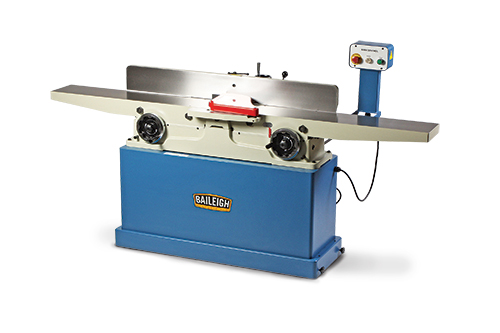
I am a novice at woodworking. I have a table saw, a table router, and a cordless drill. What exactly does a jointer add to a shop? I have not even settled on what projects I wish to do.
Michael Dresdner: A jointer, which does the same task as a hand plane, will cut one flat side on a board. From that, you can use the flat side as a reference to cut an adjacent flat side at right angles (also on the jointer, or on the table saw) or cut a parallel flat side (with a planer.)
Rob Johnstone: Jointers are versatile and important tools for stock preparation and shaping. A jointer, properly set up and used, will allow you to create a dead straight edge on a piece of lumber … which makes for a good glue joint or a straightedge to rip from on your table saw. An adjustable fence on the jointer will allow you to chamfer an edge or create a bevel on a piece of stock. (Some jointers have a notch that lets you form a rabbet on the edge of stock, though I must confess to never having used a jointer for that purpose.) You can also use it to take a bow out of stock before you run it through a planer. (This is a more advanced technique.) I’ve also made a whole bunch of uniform, tapered table legs on a jointer using a tapered jig clamped to my outfeed table. While the variety of lumber available today that is surfaced on four sides makes jointers less important to some degree, I would very much miss it in my shop.
Lee Grindinger: A jointer’s role in the shop is to flatten the faces of solid stock and straighten edges. As you delve more deeply into this craft, you will realize the importance of flat, square and true stock as you construct a piece of furniture. A slight twist in a board will make it impossible to true that board and lumber, as it is sold, is not generally flat. The first part of sizing a board is to flatten one face in preparation for the planer (thicknesser in some parts of the world). You can flatten boards using hand planes, and many still do. In fact, the jointer is the machine that was devised to do the tasks associated with hand planes. Don’t rush out to buy a jointer, though; you’ll know when you need one as your tolerances shrink.





